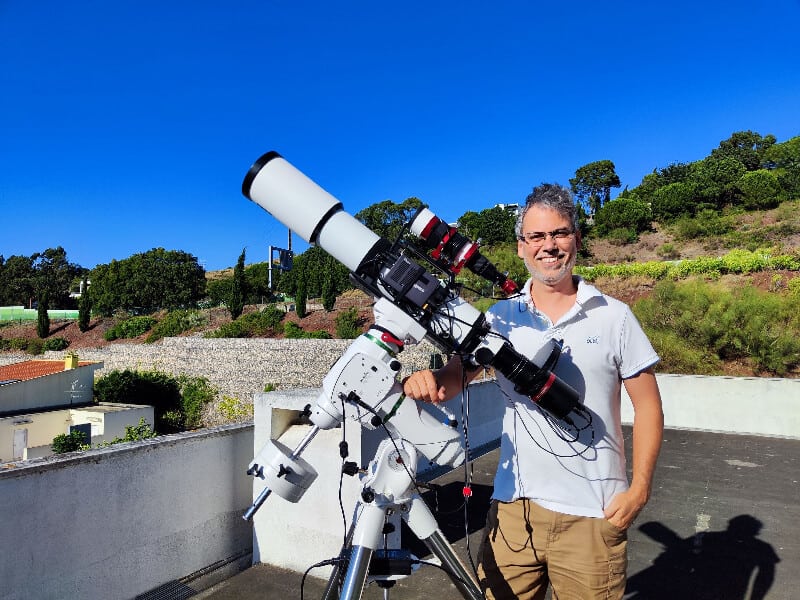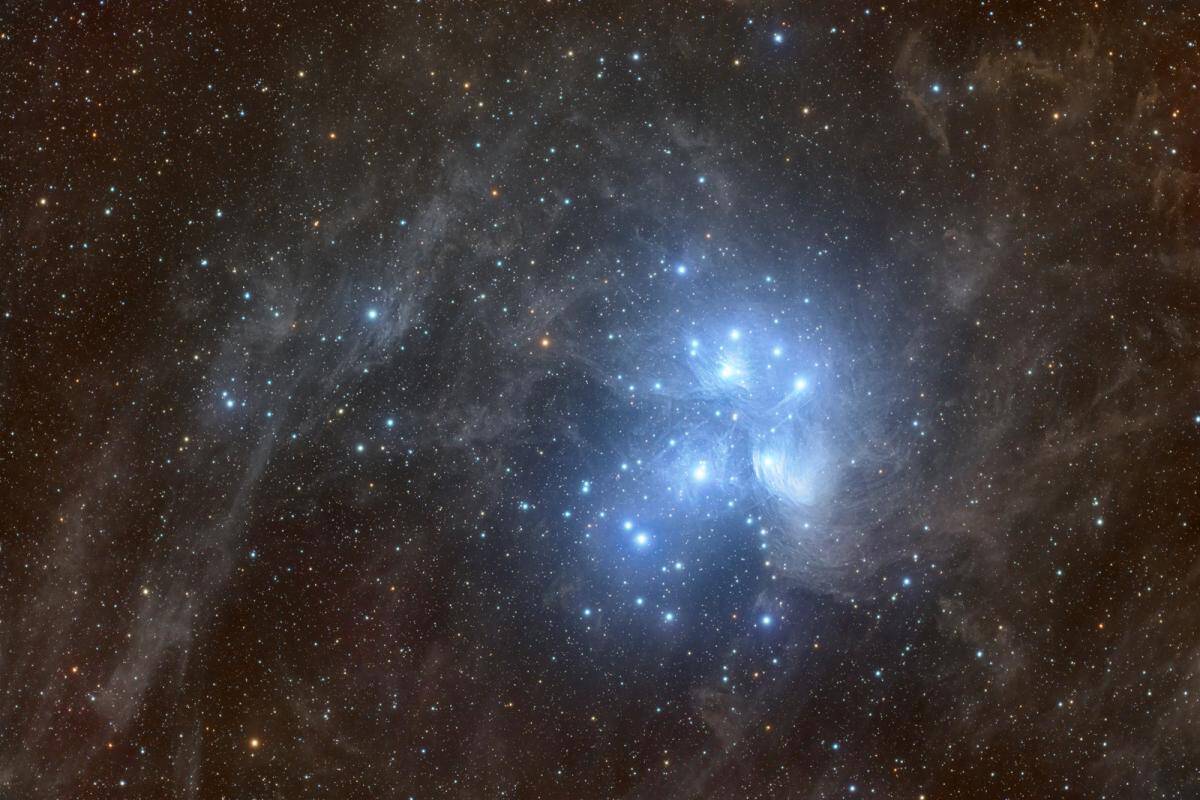In this interview, André Vilhena outlines how he took the above photo, Pleione’s Daughters.
How Did You Plan the Shot?
I usually plan my shots well in advance and wait for the best timing to shoot.
So, I made the composition and since I wanted to go deep, I went to my darker sky location (a Bortle 4).
When I do it, I shoot the same object the whole night, or most of it, preferentially above 35º or so.
I ended up shooting the RGB on October 1st, 2022 and luminance on January 18th, 2023 – in between, clouds!
It is not uncommon to have photos shot one year apart to take advantage of the best timing.
What Equipment Did You Use?
- Telescope: William Optics RedCat 51
- Mount: Skywatcher EQ6-R Pro
- Camera: QHYCCD 268M
- Filter Wheel: QHY CFW3
- Filter: Optolong LRGB 36mm
- Electronic Focuser: RB Focus Myrddin V2.3
How Did You Compose the Shot?
I had previously shot the Pleiades in a narrower field of view but I very much like shooting dust and therefore this time chose a larger one.
Framing was done in Telescopius, as I usually do, taking care not to center the object and give the nebulosity around some prominence.
I also like to have the objects “flowing” to a corner of the image, typically the top right one. And actually the Pleiades look like an arrow pointing to it.
“I tend to spend most of the time treating imperfections (halos, artifacts or gradients), if any, and on the stretch, which in my view is the make or break of a photo.”
What Post-Processing Did You Do?
Wow… this is a hard one…
Besides shooting, I do everything in PixInsight and have a generic workflow in my head which may be adjusted according to each photo needs.
This one went along these lines:
- Luminance: gradients removal > deconvolution > noise reduction > star removal > stretch
- RGB: channel combination > gradient removal > color calibration > deconvolution > noise reduction > star removal > stretch > luminance replacement > noise reduction > contrast adjustments in several iterations > color saturation > star addition > final adjustments
I tend to spend most of the time treating imperfections (halos, artifacts or gradients), if any, and on the stretch, which in my view is the make or break of a photo.
In this photo I made the use of ArcSinStretch for the luminance, which I found a good compromise between having a fairly wide dynamic range and bringing out the faint nebula – this is not the typical application you see for this type of stretch.
“I have found that investing in the acquisition and pre-processing can save a lot of headaches in processing.”
Can You Recommend Any Learning Resources For Other Astrophotographers?
I am the kind of person who needs to know the why and not just follow the recipes.
Two of my top references are:
- Robin Glover’s Picking the correct exposure for Deep Sky
- Bernd Landmann’s Preprocessing of Raw Image Data with PixInsight
I have found that investing in the acquisition and pre-processing can save a lot of headaches in processing.
I would also recommend on YouTube:
Some are more advanced than others, but all have excellent information which I find technically correct overall.

About You – André Vilhena
Well, I have liked “star stuff” since a young age and had my first telescope when I was 13, but soon after my interest faded.
In the meantime graduated in chemical engineering and came to live nearby Lisbon, Portugal.
When comet Neowise appeared in the skies back in 2020, that old passion lit up again and I decided to do astrophotography.
I studied a lot to understand and spent many, many hours trying to improve – at times was quite frustrating and I just wanted to throw the equipment out of the rooftop.
These days I feel more comfortable, have semi-automatized the acquisition and am able to spend more time with family and kids.
People in large cities are nowadays disconnected from the night skies and one of the things I most enjoy is sharing my wonder and enthusiasm with local groups and organizing observations and doing school presentations.
For astrophotography, I also do some workshops and private lessons.
You can get to know me and my work at a new website I just set up where I plan to post content other than photos and also on social networks. The links are:
I invite everyone to follow me and join my site’s mailing list – I always like to connect, have feedback and help out.



